Take Me to The Recipes
Rwanda, often referred to as the “Land of a Thousand Hills,” is a small, landlocked country located in East Africa. It boasts a temperate climate, thanks to its high elevation, and is adorned with rolling hills, expansive lakes, and lush greenery. The vegetation and geography of the country is reflected in the Rwandan cuisine.
The country’s primary industrial activities revolve around agriculture, with coffee and tea being the major exports. With a population of over 12 million people, Rwanda is a melting pot of cultures, traditions, and, of course, flavors.
Take Me to The Recipes
Rwandan Cuisine – Key take aways
- Rwandan cuisine is deeply rooted in traditional subsistence-level agriculture.
- Staples include bananas, plantains, pulses, sweet potatoes, beans, and cassava.
- The Tutsis traditionally consumed more dairy products, while the Hutus focused on vegetables.
- Modern Rwandan cuisine has seen an increase in meat consumption.
- Dishes like Ugali, Isombe, and Matoke are popular and represent the diverse culinary heritage.
- Beverages, both alcoholic and non-alcoholic, play a significant role in Rwandan culture.
Where is Rwanda?

Rwanda is a country situated in Central Africa, bordered to the North by Uganda, to the East by Tanzania, to the South by Burundi and to the West by the Democratic Republic of Congo.

Index To Contents
- Take Me to The Recipes
- More Articles
- Facts about Rwanda
- Rwanda’s History and the Effect it Has Had on the Cuisine
- How Rwanda’s Climate and Geography has Influenced Rwandan Cuisine
- Understanding the Essence of Rwandan food
- The Most Popular Rwandan Recipes
- How Healthy is Rwandan Food?
- Rwandan Food Culinary Traditions
- Great recipes to try at Home
- Conclusion
- FAQ’s
More articles
- North and South American Cuisine – A Culinary Expedition
- Europe Cuisine: Savor the Continent’s Best Culinary Secrets!
- African Cuisine: Discover the Bold Flavors & Global Charm!
- Asian Cuisine Unlock its Secrets – Taste, Health & Global Influence!
Savor iconic Rwandan Cuisine Food Recipes – Click on each tantalizing picture to open up the Recipe
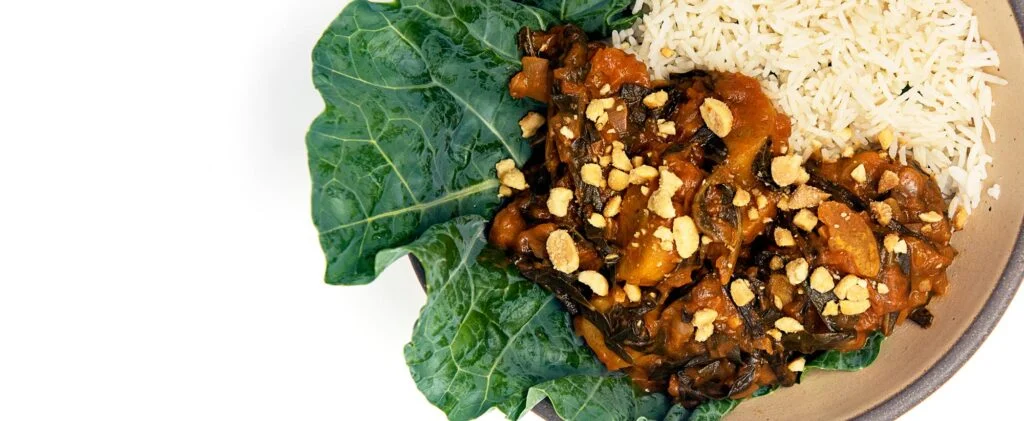
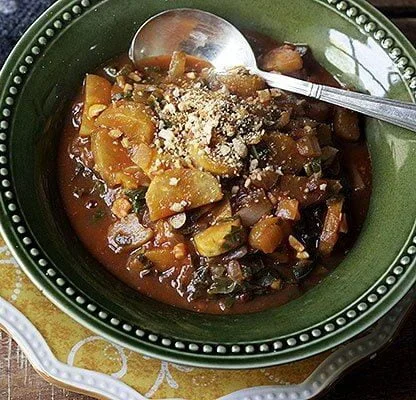
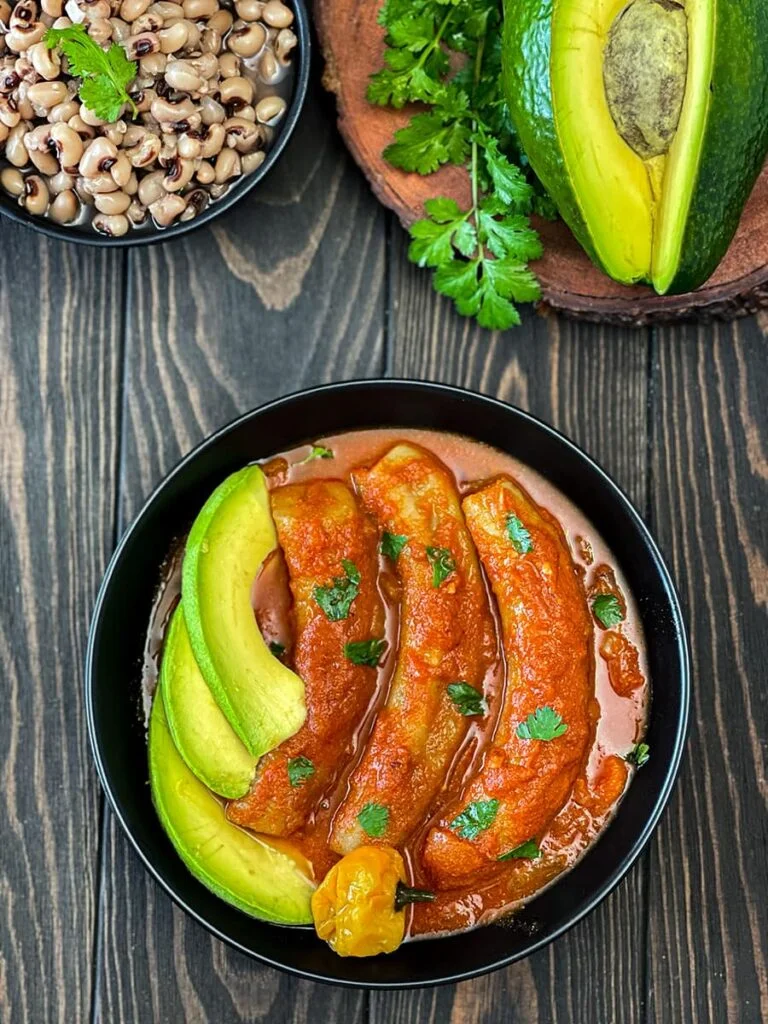
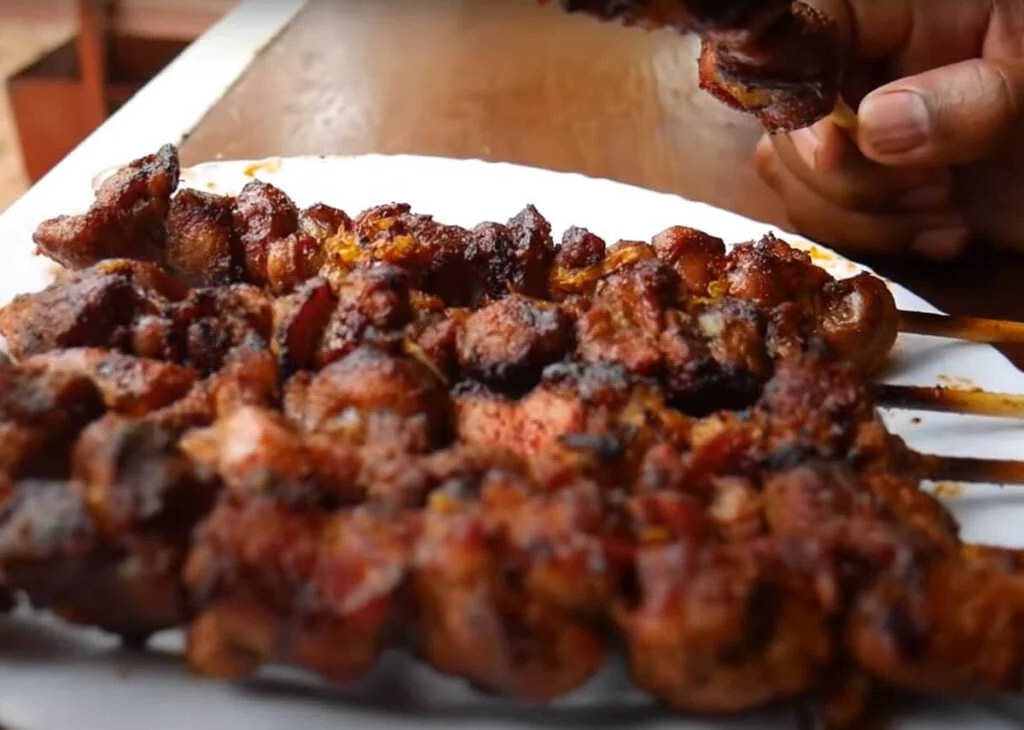
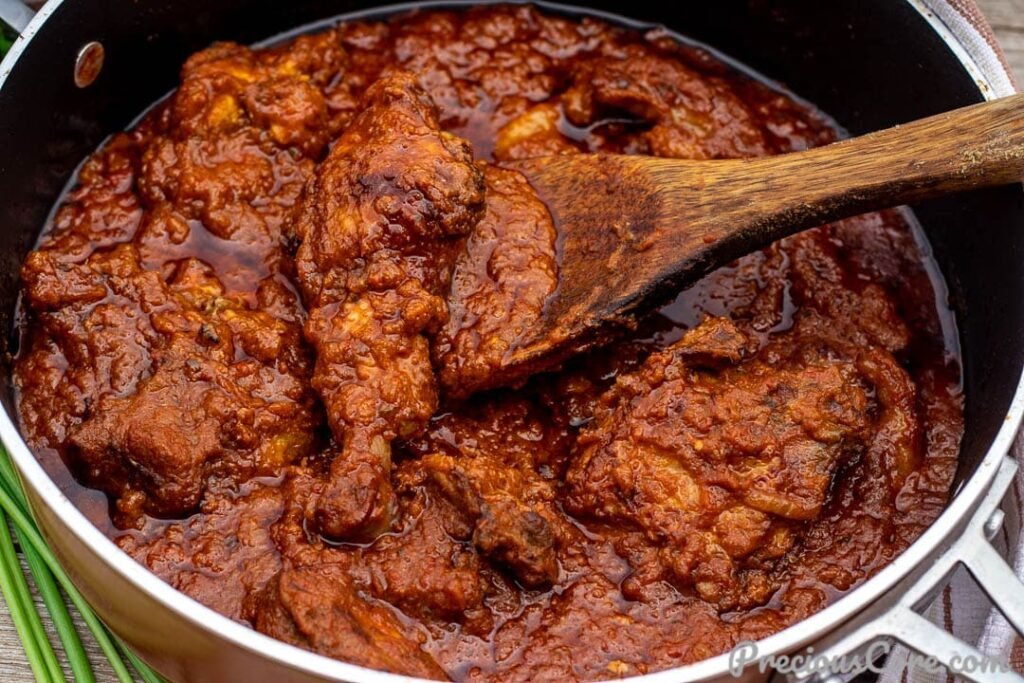
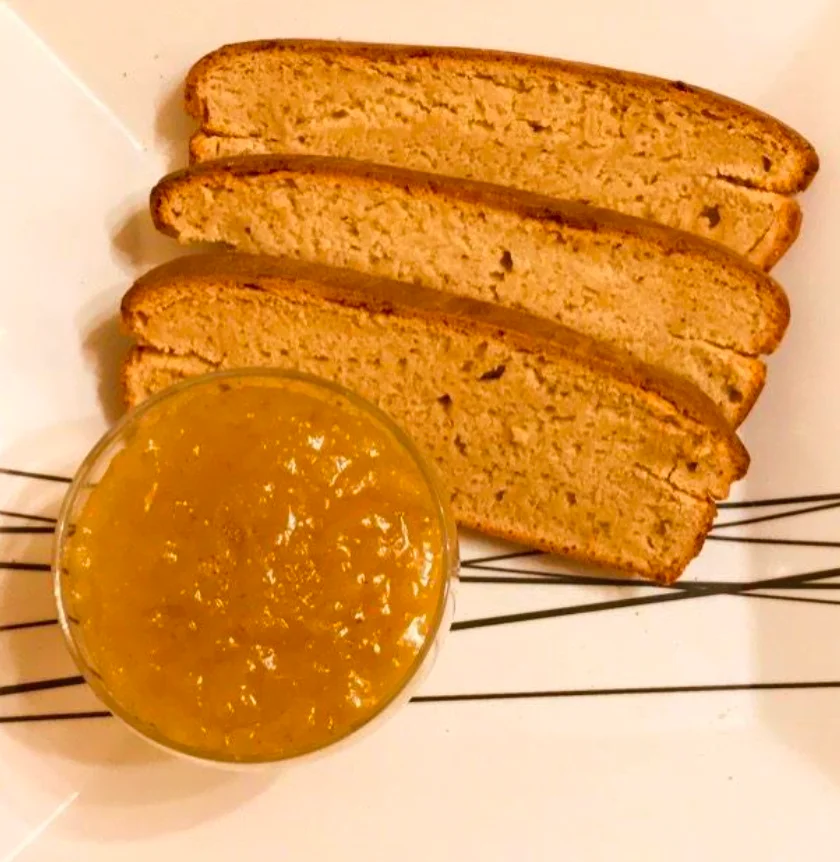


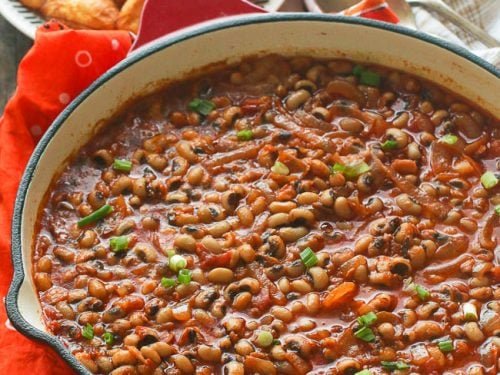
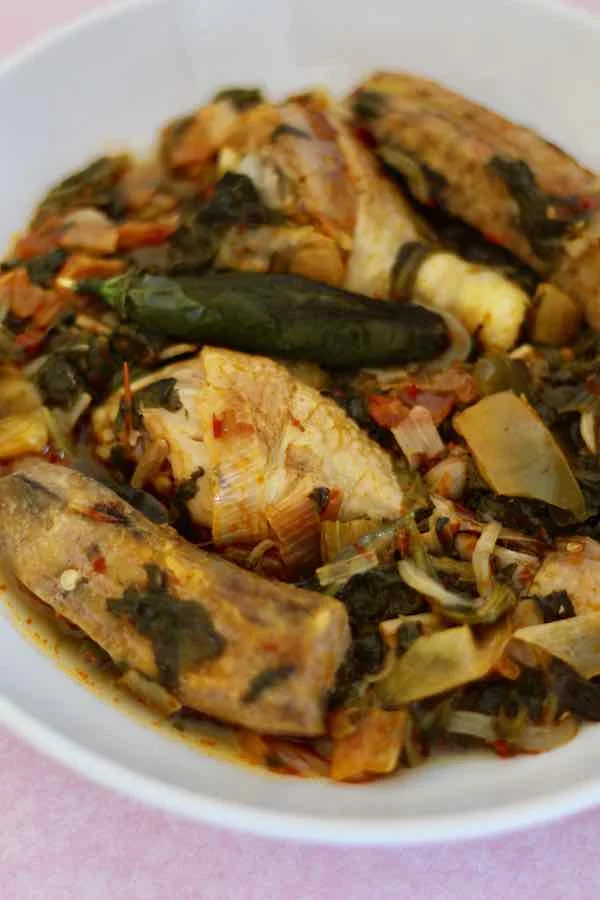

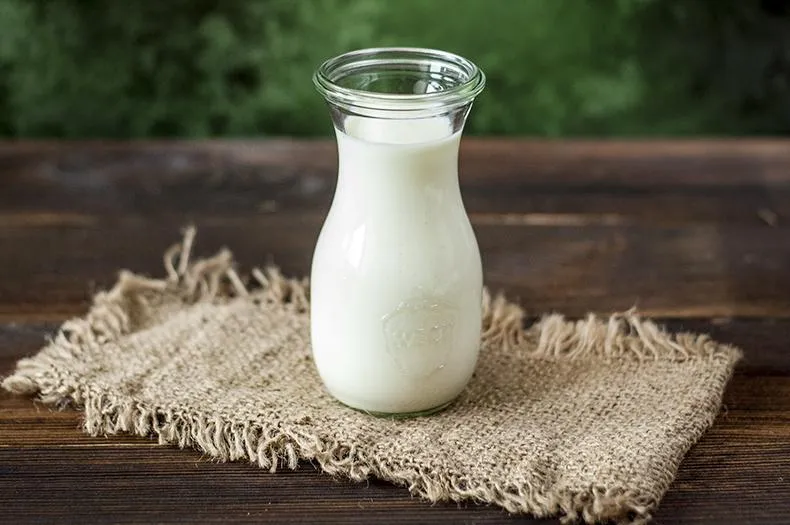
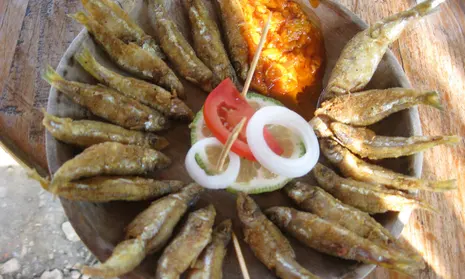



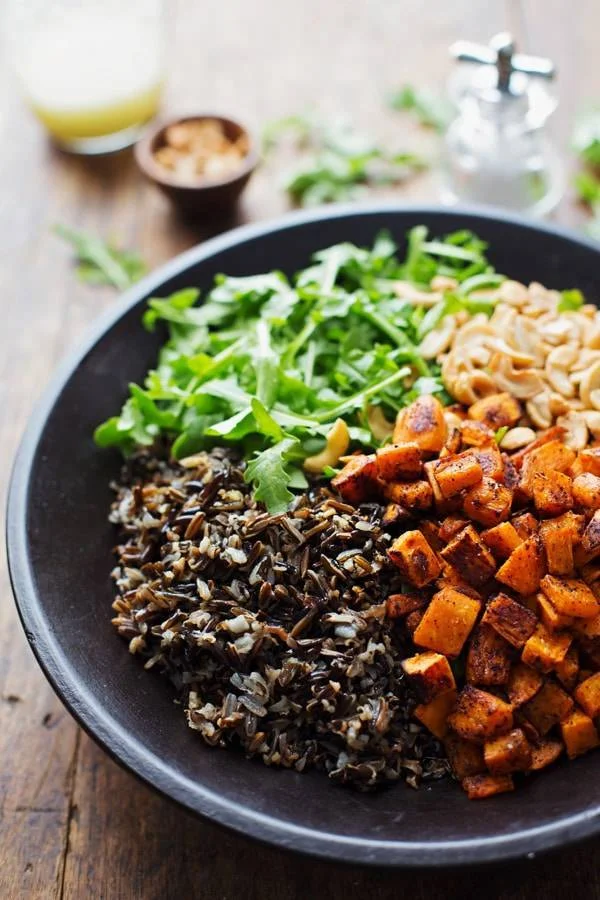
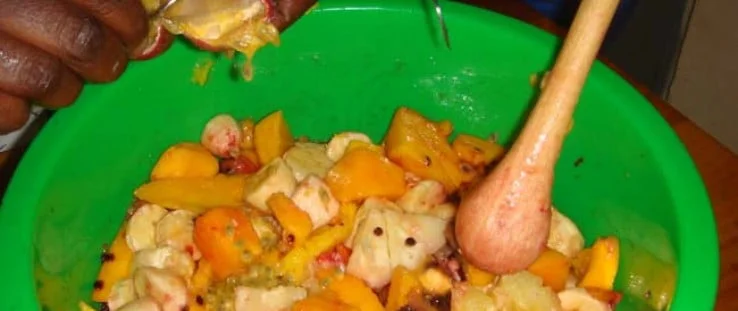
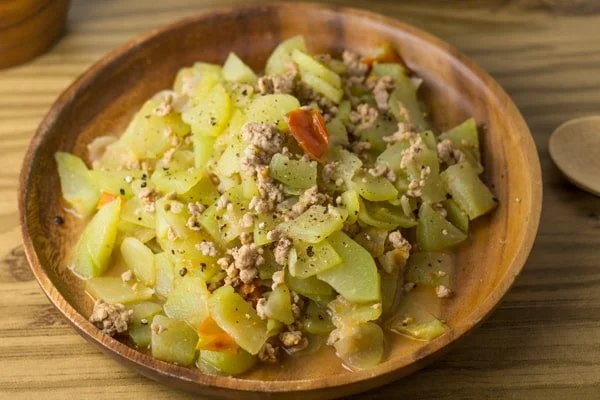
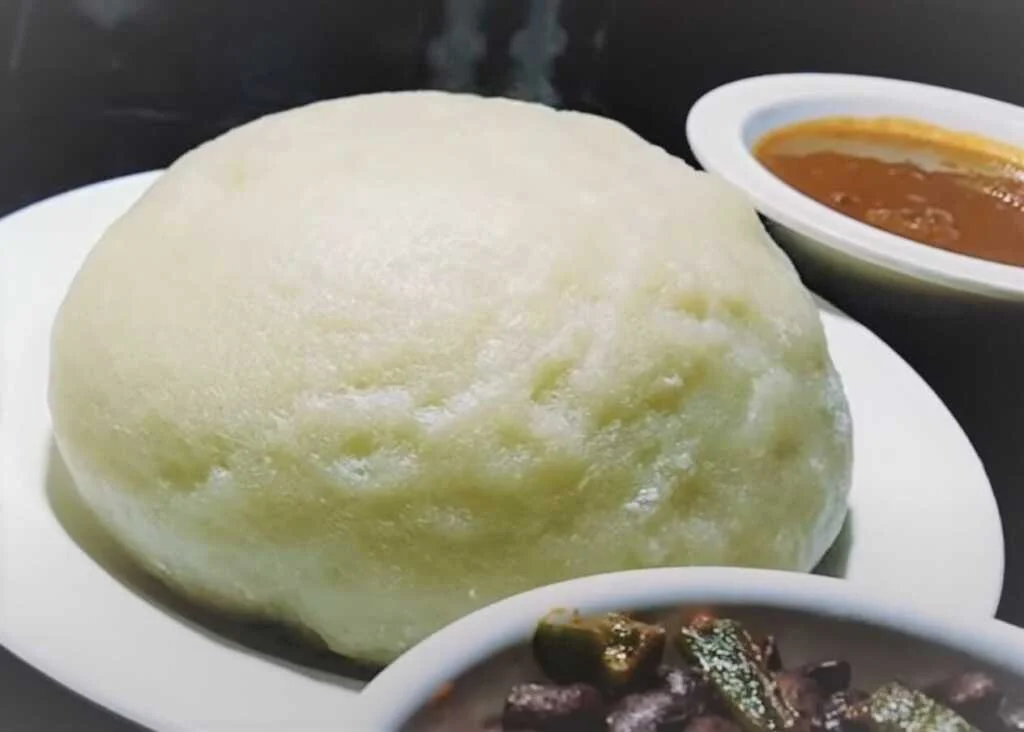


Facts about Rwanda

Rwanda stands out as one of the cleanest nations globally. The country has implemented a ten-year ban on plastic bags and packaging materials. Additionally, Rwandans engage in a monthly community clean-up called Umuganda, which translates to “coming together in common purpose.”
Introduced in 1998, Umuganda involves activities such as rehabilitating forests, wetlands, and constructing schools and hospitals. Although it is obligatory for Rwandan locals aged 18-35, visitors and expatriates are encouraged to join in on the last Saturday of every month.
Umuganda is a mandatory community activity for all Rwandans between the ages of 18 and 65, including the president himself!
Ruanda Produces Some of the Best Coffee in the World

Moreover, Rwanda offers some of the finest coffee globally. The country’s high-altitude and tropical climate create optimal conditions for exceptional coffee, particularly of the bourbon variety, characterized by its ultra-buttery and full-bodied richness.
Exploring Rwanda’s coffee fields is a sight to behold, with shiny green leaves covering lush hills stretching as far as the eye can see, creating a stunning contrast with glistening lakes and cloud forests.
Ruanda is Called the “Land of a Thousand Hills”

Rwanda got this nickname for good reason. Rwanda’s elevation spans between the Rusizi River at 950 m above sea level to the peak of Mount Karisimbi at 4,507 m above sea level. There are 374 named mountains in Rwanda.
Ruanda has a Unique Culture
Rwanda’s culture is also unique in its focus on reconciliation and healing. In the genocide’s aftermath, Rwanda has worked hard to promote peace and understanding between its people. This has led to a strong culture of forgiveness and tolerance, which is very rare in the world today.
Ruanda is Home to the Last Gorillas

Rwanda is home to some of the world’s last remaining mountain gorillas. These endangered primates are a major draw for tourists, and the country has worked hard to protect them.
The Country has one of the densest Populations in the World

Rwanda is one of the most densely populated countries in Africa. With a population of over 12 million people, it’s about the same size as Massachusetts–but with only 26,338 square kilometers of land (compared to Massachusetts’ 27,360 square kilometers).
Rwanda’s History and the Effect it Has Had on the Cuisine

Rwanda, the “Land of a Thousand Hills,” offers a culinary heritage shaped by its historical trajectories and geographical location. Historically, the Hutu, Tutsi, and Twa communities, each with distinct identities, coexisted in this East African nation, sharing many culinary traditions.
Centuries of agrarian culture ensured that Rwanda’s cuisine revolved around staple crops. The rolling hills, volcanic soils, and equatorial climate favored crops like bananas, sorghum, millet, and beans. These staples have been the foundation of Rwandan dishes for generations.
Colonization in the late 19th and early 20th centuries brought European influences, introducing new cooking methods and ingredients like potatoes and maize. This melded with local traditions, creating a fusion of tastes.
1994 Rwanda Genocide
The tragic events of the 1994 genocide, however, left a deep scar on Rwanda’s societal fabric. Amidst the turmoil, many Rwandans fled their homeland, spreading out across the globe. When they eventually returned or welcomed compatriots from the diaspora, they brought with them culinary influences from their adopted countries. Today, it’s not uncommon to find hints of Belgian, French, or even further afield influences in traditional Rwandan dishes.
Isombe, a cassava leaf stew, while being a simple traditional dish, might now join a side introduced from another country, showcasing the blending of old and new. Similarly chefs may give, akabenz, spicy fried pork, a twist with foreign spices.
In essence, while the core of Rwandan food remains loyal to its ancestral roots—reflecting its fertile soils, communal traditions, and agricultural heritage—it has also absorbed and adapted external influences. Just as Rwanda has risen resiliently from its tumultuous past, its cuisine too tells a story of endurance, adaptability, and a profound connection to the land and its history.
How Rwanda’s Climate and Geography has Influenced Rwandan Cuisine
Rwanda’s climate and geography have influenced its cuisine in various ways, such as:
Rwanda’s Coastal Regions

The coastal regions, which enjoy a tropical climate and abundant seafood, have developed dishes based on fish, shellfish, coconut, plantain, and citrus fruits. Some examples are isombe (cassava leaves cooked with peanut sauce), brochettes (skewered meat or fish), and tilapia (a type of fish)
The Central Plateau

The central plateau, which has a temperate climate and fertile soil, has cultivated crops such as beans, potatoes, sweet potatoes, maize, sorghum, and bananas. These are the main staples of the Rwandan diet, often eaten with sauces made from tomatoes, onions, and peppers.
Some examples are ubugari (a thick porridge made from cassava or maize flour), ibitoki (mashed plantains), and umutsima (a dish of beans and cassava or maize)
The Mountainous Regions
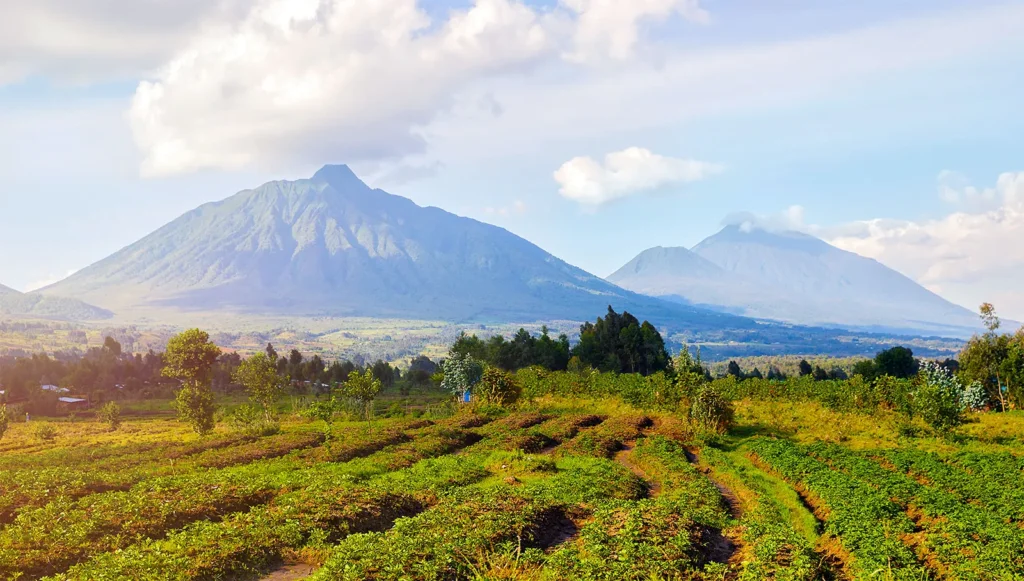
The mountainous regions, which have a cooler and wetter climate and rich biodiversity, have produced a variety of fruits, vegetables, mushrooms, and honey. They also have a tradition of raising livestock, such as cows, goats, and sheep, for milk, meat, and cheese.
Some examples are agatogo (a stew of green bananas and meat or fish), ikivuguto (a fermented milk drink), and urwagwa (a banana beer)
References:
- Rwandan cuisine – Wikipedia
- Rwanda Food and Drink – World Travel Guide
- Rwanda at a glance | FAO in Rwanda | Food and Agriculture Organization
Understanding the Essence of Rwandan food
Rwanda, known as the “Land of a Thousand Hills”, possesses a culinary tradition that is as rich and diverse as its verdant landscapes. The essence of Rwandan cuisine, like its culture, is deeply rooted in simplicity, community, and the bounties of its fertile land.
Agriculture, being the backbone of the country, significantly shapes the Rwandan food table. Staples such as plantains, cassava, sweet potatoes, and maize are central to daily meals, with dishes often prioritizing nutrition and sustenance. The climate, varying between altitudes, ensures a consistent harvest of beans and legumes, making them integral components of the Rwandan diet.
Meats, though prized, are typically reserved for special occasions. When they are consumed, goat, chicken, and beef are popular choices, often stewed or grilled. Isombe, a dish made from cassava leaves simmered in palm oil and groundnut paste, exemplifies the ingenious use of locally-sourced ingredients.

One cannot delve into Rwandan food without appreciating “akabenz”, spicy fried pork, often accompanied by “akabanga”, a fiery chili oil that’s a testament to Rwandans’ love for a touch of heat in their food.
The essence of Rwandan food culture lies not just in the dishes but in the manner of its consumption. Sharing from communal pots, passing bowls of hearty stews, and tearing off pieces of “ubugali” (a dense, dough-like food from maize or cassava flour) together underscore the country’s emphasis on community and togetherness.
Moreover, traditional drinks like “ikigage”, a sorghum beer, and “ubushera”, a fermented drink made from millet or sorghum, highlight the significance of age-old fermentation techniques.
At its heart, Rwandan cuisine is a reflection of the nation’s agricultural heritage, resilience, and communal spirit. It’s a culinary narrative that emphasizes harmony with nature, the joy of sharing, and the beauty of simplicity.
How Healthy is Rwandan Food?
The health of the Rwandan population and the healthiness of the Rwandan food are interrelated topics that depend on various factors, such as nutrition, sanitation, hygiene, access to health care, and environmental conditions.
According to the 2019-20 Rwanda Demographic and Health Survey (RDHS), some of the key indicators of the health status of the population are:
- The life expectancy at birth is 68.8 years for males and 72.6 years for females.
- The infant mortality rate is 28 deaths per 1,000 live births, and the under-five mortality rate is 38 deaths per 1,000 live births.
- The maternal mortality ratio is 248 deaths per 100,000 live births.
- The prevalence of HIV among adults age 15-49 is 2.6%, and the prevalence of malaria among children under five is 4.3%.
- The prevalence of anemia among children age 6-59 months is 37%, and among women age 15-49 is 17%.
- The prevalence of stunting (low height for age) among children under five is 33%, and the prevalence of wasting (low weight for height) is 2%.
- The prevalence of overweight or obesity among women age 15-49 is 9%, and among men age 15-59 is 4%.
Rwandan food is a mixture of different cuisines, such as indigenous, East African, and European, that reflect the country’s rich and diverse culture.

However, some of the traditional dishes may not be very healthy, as they are high in carbohydrates, salt, or oil, and low in protein, vitamins, or minerals.
For example, ubugari, ibitoki, and umutsima are all made with starchy foods, such as cassava, maize, or plantains, which can provide energy but not enough micronutrients.
Some of the healthier options are isombe, agatogo, and brochettes, which are made with vegetables, meat, or fish, and provide more balanced nutrition.
References
Rwandan Food Culinary Traditions
Nestled in the heart of East Africa, Rwanda boasts a culinary landscape as rich and varied as its verdant topography. Rooted in its agrarian traditions and the bounty of its fertile land, Rwandan cuisine offers a delectable journey of flavors and techniques that speak to its deep cultural heritage.
Central to Rwandan food is akabenz, a spicy pork dish that tantalizes the palate with its rich flavors. Marinated in a blend of chili, garlic, and ginger, the pork is fried until succulent and served as a cherished treat during celebrations.

Vegetables are a mainstay of Rwandan food, with dishes like isombe – a stew made from cassava leaves simmered in palm oil and groundnut paste – capturing the essence of Rwanda’s agricultural abundance. Beans, too, hold a revered spot, often cooked with maize or plantains, forming a hearty, protein-rich dish.
However, it’s impossible to discuss Rwandan culinary traditions without mentioning akarabo or “Rwandan porridge.” Made from sorghum or maize flour, this slightly fermented, tangy porridge is consumed widely, often kickstarting the day for many Rwandans.
The nation’s lakes contribute to its culinary diversity, with tilapia and sambaza (small sardine-like fish) being popular choices. These fish are often grilled or stewed, paired with akatogo, a spicy mixture of vegetables.
Lastly, Rwanda’s history with its colonial Belgian rulers has left subtle imprints on its cuisine. Bread and fried potatoes, known locally as ibitoke, hint at this European influence, seamlessly blending with local preferences.
In every spoonful of Rwandan food, there’s a story—a tale of its people, their connection to the land, and their journey through history. To taste Rwandan cuisine is not just to enjoy its flavors but to partake in a rich, evolving tradition that stands as a testament to the country’s resilience and cultural vibrancy.
The Most Popular Rwandan Recipes
Rwandan cuisine is a delicious blend of regional, African and international flavors. Some of the most popular Rwandan recipes are:
- Isombe: A dish of boiled and pounded cassava leaves with peanut sauce and vegetables. It is often served with rice or porridge
- Matoke: A type of green and unripe banana that is cooked in various ways, such as boiling, baking, mashing, frying, or roasting. It can be eaten as a side dish or added to soups, stews, wraps, and more
- Igisafuria: A one-pot dish of chicken and vegetables, such as onions, tomatoes, celery, and peppers. It can be spiced with hot peppers or sweetened with bananas
- Brochettes: Skewers of meat or fish that are marinated in spices and grilled over open flames. They can be made with cow, pig, chicken, or goat meat.
- Isambaza: A type of small fish that is fried and eaten whole. It is a common street food and snack in Rwanda.
- Igihembe: A red bean stew that is cooked with tomatoes, onions, and oil. It is a hearty and filling dish that can be eaten with bread, rice, or ubugari.
- Urwagwa: A banana beer that is made by fermenting ripe bananas with sorghum flour and water. It is a traditional and popular drink in Rwanda, especially during celebrations and ceremonies.
If you want to try these Rwandan recipes at home, you can find some easy and authentic instructions in the links below. Enjoy! 😋
Rwandan Cuisine – Great recipes to try at Home
The cuisine is a delightful blend of traditional and modern flavors, with a focus on fresh, locally sourced ingredients. The dishes are simple yet flavorful, often accompanied by a side of vegetables or a flavorful sauce.
Rwandan Food – Ubugari (Thick porridge made from cassava or maize flour)

History and Background of Ubugari – Rwandan Cassava or Maize Porridge
Ubugari, a traditional Rwandan dish, has deep roots in the country’s history and cultural heritage. Originating from the need for a nutritious and hearty staple, Ubugari is a thick porridge made from either cassava or maize flour.
Cassava, a root vegetable, and maize, or corn, are prevalent crops in Rwanda, making Ubugari a staple in many households. This dish reflects the resourcefulness of Rwandan cuisine, utilizing locally available ingredients to create a filling and comforting meal.
Rwandan Food – Ingredients for Ubugari (Cassava or Maize Porridge)
Cassava Ubugari:
- 2 cups cassava flour
- 4 cups water
- Pinch of salt
Maize Ubugari:
- 2 cups maize flour (cornmeal)
- 4 cups water
- Pinch of salt
Rwandan Food – Recipe for Ubugari (Cassava or Maize Porridge)
Cassava Ubugari:
- Preparation: In a bowl, mix cassava flour with water to create a smooth paste.
- Cooking: In a saucepan, bring the remaining water to a boil.
- Adding Cassava Mixture: Gradually add the cassava mixture to the boiling water, stirring continuously to avoid lumps.
- Simmering: Reduce heat to low and let it simmer for 10-15 minutes, stirring occasionally.
- Salt: Add a pinch of salt, adjusting to taste.
- Serving: Serve the cassava Ubugari warm.
Maize Ubugari:
- Preparation: In a bowl, mix maize flour with water to create a smooth paste.
- Cooking: In a saucepan, bring the remaining water to a boil.
- Adding Maize Mixture: Gradually add the maize mixture to the boiling water, stirring continuously to avoid lumps.
- Simmering: Reduce heat to low and let it simmer for 10-15 minutes, stirring occasionally.
- Salt: Add a pinch of salt, adjusting to taste.
- Serving: Serve the maize Ubugari warm.
Serving Information:
- Serves: 4-6 people
- Estimated Cooking Time: 20-30 minutes
- Approximate Calories (per serving): 150-200 kcal (calories may vary based on specific ingredient brands)
Ubugari, whether made with cassava or maize flour, is a nourishing and culturally significant dish in Rwandan cuisine. Enjoy it as a mainstay, offering a taste of tradition and simplicity.
Rwandan Food – Agatogo (Stew of green bananas and meat or fish)

History and Background of Agatogo – Rwandan Stew with Green Bananas and Meat/Fish
Agatogo, a popular dish in Rwandan cuisine, reflects the country’s rich agricultural landscape and cultural traditions. This stew, made with green bananas and meat or fish, showcases the resourcefulness of Rwandan cooking, combining locally available ingredients to create a flavorful and hearty meal.
Bananas are a staple crop in Rwanda, and their use in this dish highlights the importance of utilizing homegrown produce in traditional recipes.
Rwandan Food – Ingredients for Agatogo (Stew with Green Bananas and Meat/Fish)
Main Ingredients:
- 4 green bananas, peeled and sliced
- 1 lb meat or fish, diced (beef, goat, or tilapia are common choices)
- 1 onion, finely chopped
- 3 tomatoes, diced
- 2 tablespoons vegetable oil
- 1 cup green peas (optional)
- 4 cups water
- Salt and pepper to taste
Spices and Seasonings:
- 1 teaspoon curry powder
- 1 teaspoon paprika
- 1 teaspoon thyme
Rwandan Food – Recipe for Agatogo (Stew with Green Bananas and Meat/Fish)
Preparing Ingredients:
- Green Bananas: Peel and slice the green bananas into bite-sized pieces.
- Meat/Fish: If using meat, dice it into small pieces. If using fish, clean and cut it into chunks.
- Onion and Tomatoes: Finely chop the onion and dice the tomatoes.
Cooking Agatogo:
- Sautéing: In a large pot, heat vegetable oil over medium-high heat.
- Adding Onions: Add chopped onions to the pot and sauté until they are translucent.
- Meat/Fish: Add the diced meat or fish to the pot and cook until browned.
- Tomatoes: Stir in the diced tomatoes and cook for an additional 5 minutes.
- Spices: Add curry powder, paprika, thyme, salt, and pepper, stirring to combine.
- Bananas and Peas: Add the sliced green bananas and green peas (if using) to the pot.
- Water: Pour in the water, ensuring all ingredients are covered. Bring the stew to a boil.
- Simmering: Reduce the heat, cover the pot, and let it simmer for 30-40 minutes or until the bananas are tender.
Serving Information:
- Serves: 4-6 people
- Estimated Cooking Time: 45-55 minutes
- Approximate Calories (per serving): 300-400 kcal (calories may vary based on specific ingredients and cuts of meat/fish)
Agatogo, with its unique blend of flavors and textures, offers a delicious glimpse into the heart of Rwandan culinary traditions. Serve this stew with rice or bread for a complete and satisfying meal.
Rwandan Food – ikivuguto (a fermented milk drink)

History and Background of Ikivuguto – Rwandan Fermented Milk Drink
Ikivuguto, a traditional Rwandan beverage, holds cultural significance in the heart of the country. Originating from the practice of fermenting milk, Ikivuguto has deep roots in Rwandan pastoral traditions.
The drink is not only a source of nutrition but also a symbol of community and celebration. Often prepared during special occasions and communal gatherings, Ikivuguto reflects the close relationship between the Rwandan people and their agricultural heritage.
Rwandan Food – Ingredients for Ikivuguto (Fermented Milk Drink)
- 1 liter fresh cow’s milk (preferably whole milk)
- 2 tablespoons plain yogurt (as a starter culture)
- Sugar or honey (optional, for sweetness)
- Fruits or flavorings (optional, for variety)
Rwandan Food – Recipe for Ikivuguto (Fermented Milk Drink)
Preparing Ikivuguto:
- Heating the Milk: In a saucepan, gently heat the fresh cow’s milk until it is lukewarm. Avoid boiling.
- Adding Starter Culture: Add two tablespoons of plain yogurt to the lukewarm milk, using it as a starter culture. Stir well to distribute the culture evenly.
- Fermentation: Pour the milk mixture into a clean, airtight container. Cover it and let it ferment at room temperature for about 12-24 hours, depending on desired sourness.
- Checking Consistency: After fermentation, check the consistency. The milk should have thickened, resembling a yogurt-like texture.
Flavoring and Serving (Optional):
- Sweetening (Optional): If desired, add sugar or honey to sweeten the Ikivuguto. Stir until the sweetener is fully dissolved.
- Adding Fruits or Flavorings (Optional): Enhance the drink by adding fruits or flavorings of your choice. Common additions include vanilla, cinnamon, or mashed fruits.
- Refrigerating: Once the desired flavor is achieved, refrigerate the Ikivuguto to chill before serving.
Serving Information:
- Serves: 4-6 people
- Estimated Fermentation Time: 12-24 hours
- Approximate Calories (per serving): 100-150 kcal (calories may vary based on added sweeteners or flavorings)
Ikivuguto, with its simple yet symbolic preparation, offers a refreshing and culturally rich experience. Enjoy this fermented milk drink during gatherings or as a delightful treat to celebrate Rwandan traditions.
Rwandan Food – Urwagwa (Banana beer)

History and Background of Urwagwa – Rwandan Banana Beer
Urwagwa, a traditional Rwandan beverage, has its roots deeply embedded in the country’s cultural and agricultural practices. Originating from the lush banana plantations that thrive in Rwanda, this banana beer represents a longstanding tradition of resourceful use of local produce.
Beyond its role as a drink, Urwagwa holds cultural significance in Rwandan rituals and celebrations, often being shared among community members during festive occasions.
Rwandan Food – Ingredients for Urwagwa (Banana Beer)
- 6-8 ripe bananas (preferably sweet and overripe)
- 1 cup sorghum or millet flour
- Water
- Banana leaves or a clean cloth for covering
Rwandan Food – Recipe for Urwagwa (Banana Beer)
Preparing Urwagwa:
- Peeling and Mashing Bananas:
- Peel the ripe bananas and mash them thoroughly in a clean bowl.
- Adding Sorghum/Millet Flour:
- Gradually mix in the sorghum or millet flour with the mashed bananas. Stir well to create a smooth consistency.
- Forming a Mixture:
- Slowly add water to the banana-flour mixture, stirring continuously. The goal is to achieve a batter-like consistency.
- Fermentation:
- Pour the mixture into a clean, airtight container, covering it with banana leaves or a clean cloth. Allow it to ferment for 1-2 days at room temperature.
- Straining (Optional):
- After fermentation, strain the liquid to remove any solid particles, leaving a clear banana beer.
Serving Urwagwa:
- Chilling (Optional):
- Refrigerate the strained banana beer to cool it, or serve it at room temperature.
- Serving:
- Pour the Urwagwa into cups or bowls, and it is ready to be shared among friends and family.
Serving Information:
- Serves: 4-6 people
- Estimated Fermentation Time: 1-2 days
- Approximate Calories (per serving): 100-150 kcal (calories may vary based on banana size and added flour)
Urwagwa, with its unique blend of bananas and sorghum or millet, offers a taste of Rwandan heritage and community spirit. Enjoy this banana beer during festive occasions or as a cultural experience in the heart of Rwanda.
Rwandan Food – Igisafuria: (A one-pot dish of chicken and vegetables)

History and Background of Igisafuria – Rwandan One-Pot Chicken and Vegetable Dish
Igisafuria, a beloved dish in Rwandan cuisine, reflects the country’s rich agricultural landscape and communal culinary traditions. Originating from the need for a hearty and nutritious meal, Igisafuria is a one-pot wonder that brings together chicken and an assortment of fresh vegetables.
This dish not only showcases the diversity of Rwandan produce but also emphasizes the importance of simplicity and communal sharing in Rwandan cooking.
Rwandan Food – Ingredients for Igisafuria (One-Pot Chicken and Vegetable Dish)
Main Ingredients:
- 1 whole chicken, cut into pieces
- 4 medium-sized potatoes, peeled and diced
- 3 carrots, sliced
- 1 onion, finely chopped
- 2 tomatoes, diced
- 2 cups green beans, trimmed and cut into bite-sized pieces
- 2 tablespoons vegetable oil
- Salt and pepper to taste
Spices and Seasonings:
- 1 teaspoon garlic powder
- 1 teaspoon paprika
- 1 teaspoon thyme
Rwandan Food – Recipe for Igisafuria (One-Pot Chicken and Vegetable Dish)
Preparing Ingredients:
- Chicken Preparation:
- Cut the whole chicken into pieces, ensuring it’s cleaned and ready for cooking.
- Vegetable Preparation:
- Peel and dice the potatoes.
- Slice the carrots.
- Finely chop the onion.
- Dice the tomatoes.
- Trim and cut the green beans into bite-sized pieces.
Cooking Igisafuria:
- Sautéing:
- In a large pot, heat vegetable oil over medium-high heat.
- Add the chopped onion and sauté until translucent.
- Chicken Browning:
- Add the chicken pieces to the pot, browning them on all sides.
- Adding Vegetables:
- Stir in the diced potatoes, sliced carrots, diced tomatoes, and trimmed green beans.
- Seasoning:
- Sprinkle garlic powder, paprika, thyme, salt, and pepper over the mixture. Stir to evenly distribute the seasonings.
- Simmering:
- Pour enough water into the pot to cover the ingredients. Bring it to a boil, then reduce heat to low. Cover the pot and let it simmer for 30-40 minutes, or until the chicken is fully cooked and vegetables are tender.
Serving Information:
- Serves: 4-6 people
- Estimated Cooking Time: 45-55 minutes
- Approximate Calories (per serving): 350-450 kcal (calories may vary based on specific ingredients and chicken cuts)
Igisafuria, with its blend of chicken and vibrant vegetables, embodies the heartiness of Rwandan cuisine. Share this one-pot delight with family and friends, celebrating the wholesome flavors of Rwanda.
Rwandan Food – Brochettes: (Skewers of meat or fish)

History and Background of Brochettes – Rwandan Skewers of Meat or Fish
Brochettes, a popular dish in Rwandan cuisine, have a rich history tied to the country’s culinary traditions. This dish, consisting of skewers of meat or fish, reflects the agricultural abundance of the region and the community’s resourcefulness in utilizing locally available ingredients.
Brochettes are not just a meal but a social experience, often enjoyed during communal gatherings, celebrations, and family feasts in Rwanda.
Rwandan Food – Ingredients for Brochettes (Skewers of Meat or Fish)
Main Ingredients:
- 1 lb meat (beef, goat, or chicken) or fish fillets, cut into bite-sized pieces
- 1 onion, cut into chunks
- Bell peppers (red, green, or yellow), cut into chunks
- Wooden skewers, soaked in water
Marinade:
- 2 tablespoons vegetable oil
- 1 teaspoon garlic powder
- 1 teaspoon paprika
- 1 teaspoon thyme
- Salt and pepper to taste
Rwandan Food – Recipe for Brochettes (Skewers of Meat or Fish)
Preparing Ingredients:
- Meat or Fish Preparation:
- If using meat, cut it into bite-sized pieces. If using fish, ensure the fillets are cut into chunks.
- Vegetable Preparation:
- Cut the onion and bell peppers into chunks suitable for skewering.
Marinating:
- Marinade Preparation:
- In a bowl, mix vegetable oil, garlic powder, paprika, thyme, salt, and pepper to create the marinade.
- Coating the Ingredients:
- Coat the meat or fish pieces, onion chunks, and bell pepper chunks with the prepared marinade. Ensure all pieces are evenly coated. Let it marinate for at least 30 minutes.
Skewering and Grilling:
- Skewering:
- Thread the marinated meat or fish pieces, onion chunks, and bell pepper chunks onto the soaked wooden skewers.
- Preheating the Grill:
- Preheat a grill or grill pan over medium-high heat.
- Grilling the Brochettes:
- Grill the skewers for approximately 10-15 minutes, turning occasionally, until the meat or fish is fully cooked and has a desired char.
Serving Information:
- Serves: 4-6 people
- Estimated Cooking Time: 30-40 minutes (including marination)
- Approximate Calories (per serving): 250-300 kcal (calories may vary based on specific meat or fish choices)
Brochettes, with their vibrant colors and flavors, offer a delicious taste of Rwandan culinary culture. Whether enjoyed as a snack or a main course, these skewers are a delightful addition to any Rwandan feast or gathering.
Rwandan Food – Isambaza: (A type of small fish)

History and Background of Rwandan Brochettes:
Rwandan brochettes, also known as skewers of meat or fish, have a rich history deeply rooted in the culinary traditions of East Africa. This popular dish reflects the vibrant culture and flavors of Rwanda, a country known for its lush landscapes and diverse agriculture.
Brochettes are a common street food and a favorite at social gatherings, embodying the communal spirit of Rwandan cuisine. The skewers often showcase a delightful blend of local spices and grilling techniques that have been passed down through generations.
Rwandan Food – Ingredients for Rwandan Brochettes:
- 2 pounds of meat (beef, chicken, or fish), cut into bite-sized cubes
- 1 large red onion, diced
- 3 cloves of garlic, minced
- 1 tablespoon vegetable oil
- 1 teaspoon paprika
- 1 teaspoon cayenne pepper
- 1 teaspoon ground cumin
- Salt and pepper to taste
- Wooden skewers, soaked in water for at least 30 minutes
Rwandan Food – Recipe for Rwandan Brochettes
1. Prepare the Marinade:
- In a bowl, combine diced red onion, minced garlic, vegetable oil, paprika, cayenne pepper, ground cumin, salt, and pepper.
- Mix well to create a flavorful marinade.
2. Marinate the Meat:
- Place the meat cubes in a large bowl.
- Pour the marinade over the meat, ensuring all pieces are well-coated.
- Cover the bowl and refrigerate for at least 2 hours, allowing the flavors to infuse.
3. Skewering:
- Preheat your grill or barbecue.
- Thread the marinated meat cubes onto the soaked wooden skewers.
4. Grilling:
- Grill the skewers over medium heat, turning occasionally, until the meat is cooked to your desired doneness.
- This usually takes about 15-20 minutes.
5. Serve:
- Remove the skewers from the grill and let them rest for a few minutes.
- Serve the brochettes hot, accompanied by your favorite side dishes.
Serving Information:
- Serves: 4 people
- Cooking Time: Approximately 20 minutes
- Calories: The total calorie count for the dish will vary based on the type of meat used. As an estimate, beef brochettes may contain around 300 calories per serving.
Enjoy these flavorful Rwandan brochettes as a delightful taste of East African cuisine!
Rwandan Food – Igihembe: (A red bean stew)

History and Background of Rwandan Igihembe:
Igihembe, a flavorful red bean stew, is a staple in Rwandan cuisine with a history deeply connected to the region’s agricultural heritage. Originating from the heart of East Africa, this dish reflects the importance of beans as a key ingredient in the local diet.
Rwandans have cultivated a strong connection to the land, and Igihembe is a testament to the simplicity and nutritional richness of their traditional meals.
Rwandan Food – Ingredients for Rwandan Igihembe
- 2 cups dry red beans, soaked overnight
- 1 large onion, finely chopped
- 2 tomatoes, diced
- 3 cloves garlic, minced
- 1 teaspoon vegetable oil
- 1 teaspoon paprika
- 1 teaspoon cayenne pepper (adjust to taste)
- Salt and pepper to taste
- 4 cups water
- Fresh parsley or cilantro for garnish
Rwandan Food – Recipe for Rwandan Igihembe
1. Prepare the Red Beans:
- Rinse the soaked red beans thoroughly.
- In a large pot, combine the beans with 4 cups of water.
- Bring to a boil and then simmer for about 1 to 1.5 hours until the beans are tender.
2. Sauté the Vegetables:
- In a separate pan, heat vegetable oil over medium heat.
- Add chopped onion, minced garlic, diced tomatoes, paprika, cayenne pepper, salt, and pepper.
- Sauté until the vegetables are softened and the mixture becomes aromatic.
3. Combine and Simmer:
- Add the sautéed vegetable mixture to the pot of cooked red beans.
- Stir well and let the stew simmer for an additional 20-30 minutes, allowing the flavors to meld.
4. Garnish and Serve:
- Adjust seasoning if needed and garnish with fresh parsley or cilantro.
- Serve the Igihembe hot, either as a side dish or a wholesome main course.
Serving Information:
- Serves: 6 people
- Cooking Time: Approximately 2 hours (including bean soaking and simmering time)
- Calories: The total calorie count for the dish will vary based on specific ingredients, but a serving of Igihembe is typically around 200 calories.
Enjoy the comforting flavors of Rwandan Igihembe, a dish that captures the essence of East African culinary traditions!
Rwandan Food – Chicken Stew with Celery

History and Background of Rwandan Chicken Stew with Celery:
Chicken Stew with Celery is a comforting dish that finds its roots in the heart of Rwanda, a country nestled in East Africa. This culinary creation embodies the essence of Rwandan home cooking, where fresh and locally available ingredients are used to craft delicious and nourishing meals.
The use of celery adds a unique flavor and texture to the stew, showcasing the resourcefulness of Rwandan cuisine in utilizing ingredients readily found in the region.
Rwandan Food – Ingredients for Rwandan Chicken Stew with Celery:
- 2 pounds chicken pieces (thighs, drumsticks, or a mix)
- 2 tablespoons vegetable oil
- 1 large onion, finely chopped
- 3 cloves garlic, minced
- 2 large tomatoes, diced
- 3 celery stalks, chopped
- 2 carrots, sliced
- 1 bell pepper, diced
- 1 teaspoon paprika
- 1 teaspoon dried thyme
- Salt and pepper to taste
- 4 cups chicken broth
- Fresh parsley for garnish
Rwandan Food – Recipe for Rwandan Chicken Stew with Celery:
1. Sear the Chicken:
- Heat vegetable oil in a large pot over medium heat.
- Brown the chicken pieces on all sides until golden brown.
2. Sauté Aromatics:
- Add chopped onion and minced garlic to the pot.
- Sauté until the onions are translucent and garlic is fragrant.
3. Add Vegetables and Spices:
- Stir in diced tomatoes, chopped celery, sliced carrots, and diced bell pepper.
- Season with paprika, dried thyme, salt, and pepper.
4. Simmer with Broth:
- Pour in chicken broth, ensuring it covers the chicken and vegetables.
- Bring the stew to a boil, then reduce the heat to simmer.
5. Cook Until Tender:
- Cover the pot and let the stew simmer for about 30-40 minutes or until the chicken is cooked through and vegetables are tender.
6. Garnish and Serve:
- Adjust seasoning if needed and garnish with fresh parsley.
- Serve the Chicken Stew with Celery hot, accompanied by rice or bread.
Serving Information:
- Serves: 6 people
- Cooking Time: Approximately 1 hour
- Calories: The total calorie count for the dish will vary based on specific ingredients, but a serving of Chicken Stew with Celery is typically around 300 calories.
Enjoy the hearty and flavorful Chicken Stew with Celery, a delightful representation of Rwandan culinary traditions!
Rwandan Food – Roasted Sweet Potato, Wild Rice, and Arugula Salad

History and Background of Rwandan Roasted Sweet Potato, Wild Rice, and Arugula Salad:
The Roasted Sweet Potato, Wild Rice, and Arugula Salad is a vibrant dish that reflects the agricultural diversity and culinary creativity of Rwandan cuisine. Rooted in the heart of East Africa, this salad brings together locally grown sweet potatoes, the earthy richness of wild rice, and the peppery freshness of arugula.
It is a testament to the ingenuity of Rwandan cooks, who combine nutritious ingredients to create a harmonious and flavorful salad that captures the essence of the region.
Rwandan Food – Ingredients for Rwandan Roasted Sweet Potato, Wild Rice, and Arugula Salad:
- 2 large sweet potatoes, peeled and diced
- 1 cup wild rice, cooked
- 4 cups fresh arugula
- 1 red onion, thinly sliced
- 1/2 cup feta cheese, crumbled
- 1/4 cup dried cranberries
- 1/4 cup chopped walnuts
- 3 tablespoons olive oil
- 2 tablespoons balsamic vinegar
- 1 tablespoon honey
- Salt and pepper to taste
Rwandan Food – Recipe for Rwandan Roasted Sweet Potato, Wild Rice, and Arugula Salad:
1. Roast the Sweet Potatoes:
- Preheat the oven to 400°F (200°C).
- Toss the diced sweet potatoes with 1 tablespoon of olive oil, salt, and pepper.
- Spread them on a baking sheet and roast for 25-30 minutes until golden and tender.
2. Prepare Wild Rice:
- Cook wild rice according to package instructions.
- Once cooked, let it cool to room temperature.
3. Assemble the Salad:
- In a large bowl, combine the roasted sweet potatoes, cooked wild rice, fresh arugula, thinly sliced red onion, crumbled feta cheese, dried cranberries, and chopped walnuts.
4. Make the Dressing:
- In a small bowl, whisk together 2 tablespoons of olive oil, balsamic vinegar, honey, salt, and pepper.
5. Dress the Salad:
- Drizzle the dressing over the salad and toss gently to coat all the ingredients.
6. Serve:
- Adjust seasoning if needed and serve the Roasted Sweet Potato, Wild Rice, and Arugula Salad immediately.
Serving Information:
- Serves: 4 people
- Cooking Time: Approximately 45 minutes (including roasting time for sweet potatoes)
- Calories: The total calorie count for the dish will vary based on specific ingredients, but a serving of this salad is typically around 350 calories.
Indulge in the wholesome flavors of this Rwandan salad, celebrating the fusion of sweet, savory, and peppery notes!
Rwandan Food – Sauteed Chayote with Garlic and Herbs

History and Background of Rwandan Sauteed Chayote with Garlic and Herbs:
Sauteed Chayote with Garlic and Herbs is a delightful dish rooted in Rwandan culinary traditions. Chayote, also known as mirliton or vegetable pear, is a versatile ingredient widely embraced in East African cooking.
The recipe showcases the simplicity and elegance of Rwandan home cuisine, where fresh produce and aromatic herbs come together to create a flavorful side dish. This dish reflects the region’s emphasis on incorporating locally available ingredients into daily meals.
Rwandan Food – Ingredients for Rwandan Sauteed Chayote with Garlic and Herbs:
- 4 chayotes, peeled, pitted, and thinly sliced
- 3 tablespoons vegetable oil
- 3 cloves garlic, minced
- 1 teaspoon dried thyme
- 1 teaspoon dried oregano
- Salt and pepper to taste
- Fresh parsley for garnish
Rwandan Food – Recipe for Rwandan Sauteed Chayote with Garlic and Herbs:
1. Prepare Chayote:
- Peel the chayotes, remove the pit, and thinly slice them.
2. Saute Garlic:
- Heat vegetable oil in a large skillet over medium heat.
- Add minced garlic and sauté until fragrant.
3. Cook Chayote:
- Add the sliced chayotes to the skillet.
- Sprinkle dried thyme, dried oregano, salt, and pepper over the chayotes.
- Saute for 10-15 minutes or until the chayotes are tender but still crisp.
4. Garnish and Serve:
- Adjust seasoning if needed and garnish with fresh parsley.
- Serve the Sauteed Chayote with Garlic and Herbs hot as a flavorful side dish.
Serving Information:
- Serves: 4 people
- Cooking Time: Approximately 20 minutes
- Calories: The total calorie count for the dish will vary based on specific ingredients, but a serving of Sauteed Chayote with Garlic and Herbs is typically around 100 calories.
Experience the light and savory flavors of this Rwandan dish, a perfect complement to a variety of main courses!
Rwandan Food – “Agatogo” with Collard Greens

History and Background of Rwandan “Agatogo” with Collard Greens:
“Agatogo” with Collard Greens is a traditional Rwandan dish that reflects the cultural and agricultural richness of the region. Rwandan cuisine is deeply connected to the land, and this dish is a celebration of locally sourced ingredients. “Agatogo” is a hearty stew, often featuring collard greens, a staple in Rwandan cooking.
This comforting and nutritious dish embodies the spirit of communal meals in Rwanda, where families gather to enjoy flavors that have been passed down through generations.
Rwandan Food – Ingredients for Rwandan “Agatogo” with Collard Greens:
- 2 cups dry cowpeas (black-eyed peas), soaked overnight
- 1 cup dry corn kernels, soaked overnight
- 1 large onion, finely chopped
- 3 cloves garlic, minced
- 2 tomatoes, diced
- 4 cups collard greens, chopped
- 2 tablespoons vegetable oil
- 1 teaspoon ground coriander
- 1 teaspoon paprika
- Salt and pepper to taste
Rwandan Food – Recipe for Rwandan “Agatogo” with Collard Greens:
1. Prepare Cowpeas and Corn:
- Rinse soaked cowpeas and corn thoroughly.
- In a large pot, combine cowpeas, corn, and enough water to cover. Bring to a boil and simmer until both are tender.
2. Sauté Aromatics:
- In a separate pan, heat vegetable oil over medium heat.
- Add chopped onion and minced garlic, sautéing until golden and fragrant.
3. Add Tomatoes and Spices:
- Stir in diced tomatoes, ground coriander, paprika, salt, and pepper.
- Cook until the tomatoes break down and create a flavorful base.
4. Combine Ingredients:
- Add the sautéed mixture to the pot of cooked cowpeas and corn.
- Stir in the chopped collard greens and simmer until the greens are tender.
5. Adjust Seasoning and Serve:
- Adjust salt and pepper to taste.
- Serve “Agatogo” hot, either as a standalone dish or with a side of rice.
Serving Information:
- Serves: 6 people
- Cooking Time: Approximately 1.5 hours (including soaking time for cowpeas and corn)
- Calories: The total calorie count for the dish will vary based on specific ingredients, but a serving of “Agatogo” with Collard Greens is typically around 250 calories.
Enjoy the wholesome flavors and cultural richness of Rwandan “Agatogo” with Collard Greens, a dish that brings people together through the joy of shared meals.
Rwandan Food – Rwandan Fruit Salad

History and Background of Rwandan Fruit Salad:
Rwandan Fruit Salad is a refreshing and colorful dish that embodies the bounty of fresh produce in East Africa. The region’s tropical climate provides an abundance of fruits, and this salad is a celebration of their natural sweetness and vibrant flavors.
Often enjoyed as a light and healthy dessert or snack, Rwandan Fruit Salad reflects the simplicity and joy found in the local culinary culture.
Ingredients for Rwandan Fruit Salad:
- 2 cups pineapple chunks
- 2 cups papaya chunks
- 2 cups mango chunks
- 1 cup banana slices
- 1 cup passion fruit, seeds scooped out
- 1 tablespoon honey
- Juice of 1 lime
- Fresh mint leaves for garnish
Recipe for Rwandan Fruit Salad:
1. Prepare Fruits:
- Peel and cut pineapple, papaya, mango, and bananas into bite-sized chunks.
2. Combine Fruits:
- In a large bowl, gently mix together the pineapple, papaya, mango, banana, and passion fruit seeds.
3. Make Dressing:
- In a small bowl, whisk together honey and lime juice to create a light dressing.
4. Toss with Dressing:
- Drizzle the honey-lime dressing over the mixed fruits and toss gently to coat.
5. Garnish and Chill:
- Garnish the fruit salad with fresh mint leaves.
- Chill in the refrigerator for at least 30 minutes before serving to enhance flavors.
6. Serve:
- Serve the Rwandan Fruit Salad in individual bowls or as a refreshing side for any meal.
Serving Information:
- Serves: 4 people
- Preparation Time: 15 minutes
- Chilling Time: 30 minutes
- Calories: The total calorie count for the dish will vary based on specific fruits used, but a serving of Rwandan Fruit Salad is typically around 120 calories.
Indulge in the natural sweetness and vibrant colors of this delightful Rwandan Fruit Salad, a perfect treat for warm days or a healthy addition to any meal.
Rwandan Food – Vegan Agatogo

History and Background of Rwandan Vegan Agatogo:
Vegan Agatogo is a plant-based adaptation of the traditional Rwandan dish, “Agatogo.” Rooted in Rwandan culinary heritage, this vegan version celebrates the region’s rich agricultural diversity. “Agatogo” traditionally includes cowpeas and corn, but this vegan iteration incorporates a variety of plant-based ingredients to create a hearty stew.
Embracing the flavors and spirit of Rwandan cooking, Vegan Agatogo reflects a growing movement towards plant-based alternatives in the region.
Rwandan Food – Ingredients for Rwandan Vegan Agatogo:
- 2 cups dry lentils, rinsed
- 1 cup dry quinoa, rinsed
- 1 large onion, finely chopped
- 3 cloves garlic, minced
- 2 tomatoes, diced
- 4 cups kale, chopped
- 2 carrots, sliced
- 1 bell pepper, diced
- 2 tablespoons vegetable oil
- 1 teaspoon ground coriander
- 1 teaspoon paprika
- Salt and pepper to taste
Rwandan Food – Recipe for Rwandan Vegan Agatogo:
1. Prepare Lentils and Quinoa:
- Rinse lentils and quinoa thoroughly.
- In a large pot, combine lentils, quinoa, and enough water to cover. Bring to a boil and simmer until both are tender.
2. Sauté Aromatics:
- In a separate pan, heat vegetable oil over medium heat.
- Add chopped onion and minced garlic, sautéing until golden and fragrant.
3. Add Tomatoes and Spices:
- Stir in diced tomatoes, ground coriander, paprika, salt, and pepper.
- Cook until the tomatoes break down and create a flavorful base.
4. Combine Ingredients:
- Add the sautéed mixture to the pot of cooked lentils and quinoa.
- Stir in chopped kale, sliced carrots, and diced bell pepper.
- Simmer until the vegetables are tender.
5. Adjust Seasoning and Serve:
- Adjust salt and pepper to taste.
- Serve Vegan Agatogo hot, either as a standalone dish or with a side of rice.
Serving Information:
- Serves: 6 people
- Cooking Time: Approximately 45 minutes (including cooking time for lentils and quinoa)
- Calories: The total calorie count for the dish will vary based on specific ingredients, but a serving of Vegan Agatogo is typically around 300 calories.
Savor the wholesome flavors of Rwandan Vegan Agatogo, a nutritious and plant-based twist on a traditional East African stew.
Rwandan Food – Honey bread

History and Background of Rwandan Honey Bread:
Honey Bread, a sweet and delightful treat, reflects the warmth and sweetness of Rwandan culture. While the exact origins of this recipe may be elusive, honey has long been a cherished ingredient in Rwandan cuisine.
This bread, infused with the natural sweetness of honey, embodies the country’s connection to agriculture and the joy found in simple, homemade delicacies. It’s a testament to the vibrant culinary traditions of East Africa.
Rwandan Food – Ingredients for Rwandan Honey Bread
- 3 cups all-purpose flour
- 1 packet (2 1/4 teaspoons) active dry yeast
- 1 cup warm water
- 1/4 cup honey
- 1/4 cup vegetable oil
- 1 teaspoon salt
- Additional flour for kneading
- Honey for drizzling (optional)
Rwandan Food – Recipe for Rwandan Honey Bread
1. Activate the Yeast:
- In a small bowl, combine active dry yeast with warm water. Let it sit for 5-10 minutes until it becomes frothy.
2. Mix Dough:
- In a large mixing bowl, combine the activated yeast mixture with flour, honey, vegetable oil, and salt.
- Mix until a dough forms.
3. Knead the Dough:
- Dust a clean surface with flour and knead the dough for about 8-10 minutes until it becomes smooth and elastic.
4. Rise:
- Place the dough in a lightly oiled bowl, cover it with a damp cloth, and let it rise in a warm place for 1-2 hours, or until it doubles in size.
5. Shape and Second Rise:
- Preheat the oven to 375°F (190°C).
- Punch down the risen dough and shape it into a loaf.
- Place the shaped dough in a greased loaf pan and let it rise for an additional 30-45 minutes.
6. Bake:
- Bake the honey bread in the preheated oven for 25-30 minutes, or until the top is golden brown and the bread sounds hollow when tapped.
7. Optional Honey Drizzle:
- While the bread is still warm, drizzle honey over the top for extra sweetness.
8. Cool and Serve:
- Allow the honey bread to cool in the pan for 10 minutes before transferring it to a wire rack to cool completely.
- Slice and serve.
Serving Information:
- Serves: 8 people
- Preparation Time: 15 minutes
- Rising Time: 1-2 hours
- Baking Time: 25-30 minutes
- Calories: The total calorie count for the bread will vary based on specific ingredients, but a serving is typically around 200 calories.
Enjoy the comforting sweetness of Rwandan Honey Bread, a delightful addition to any meal or a tasty snack on its own.
Rwandan Food – Rwandan food – Ibitoki

Ibitoki, a traditional Rwandan food dish made from plantains, holds a special place in the culinary heritage of the country. Plantains, being a staple in many African countries, have been cultivated and consumed in Rwanda for centuries.
The name “Ibitoki” is derived from the Kinyarwanda language, where “ibitoke” means plantains. Historically, this dish was a simple yet nutritious solution to the need for easily accessible and affordable food sources. Given Rwanda’s agricultural background, plantains were, and still are, widely available, making them a popular choice for daily meals.
Over time, as culinary practices evolved and merged with influences from neighboring countries, Ibitoki transformed from a basic fried plantain dish to one that could be enhanced with various spices and accompaniments.
Today, while it remains a symbol of traditional Rwandan cooking, Ibitoki is also a testament to the adaptability and resilience of Rwandan cuisine in the face of changing times and tastes.
Ingredients for Ibitoki
- Ripe plantains
- Salt
- Oil for frying
Rwandan food – How to prepare Ibitoki
- Peel the plantains and slice them into thin rounds.
- Heat oil in a frying pan and fry the plantain slices until they are golden brown.
- Season with salt and serve hot.
Rwandan food – Presentation and Serving
Serve Ibitoki as a snack or appetizer. It’s best enjoyed hot and crispy, straight from the frying pan.
Drink Pairing
A cold glass of fruit juice or a light beer complements the rich flavors of Ibitoki.
Rwandan food – Isombe

Isombe, a cherished Rwandan food dish is primarily made from cassava leaves and often accompanied by meat or fish. Cassava, a tuberous root native to South America, was introduced to Africa by Portuguese traders in the 16th century.
As it thrived in the African soil and climate, it quickly became a staple across the continent, including Rwanda. The leaves of the cassava plant, which were once discarded, found their way into the culinary traditions of the Rwandan people, leading to the creation of Isombe.
The dish embodies the resourcefulness of Rwandan cooks, making use of every part of the plant. Over the years, Isombe has evolved, with variations including the addition of palm oil and groundnut paste, giving it a rich, nutty flavor.
The Rwandan food dish is not only a testament to the adaptability of Rwandan cuisine but also a reflection of the country’s history of trade, colonization, and cultural exchange. Today, Isombe stands as a symbol of Rwandan culinary heritage, representing the blend of tradition and innovation that characterizes the nation’s food culture.
Rwandan food – Ingredients for Isombe
- Cassava leaves
- Palm oil
- Groundnut paste
- Meat or fish
- Salt and spices
Rwandan food – How to Prepare Isombe
- Boil the cassava leaves until they are soft.
- In a separate pan, heat palm oil and add the groundnut paste.
- Add the boiled cassava leaves and meat or fish.
- Season with salt and spices and simmer until all ingredients are well-cooked.
Presentation and Serving
Serve Isombe with a side of rice or Ugali. The rich, nutty flavor of the sauce pairs well with the subtle taste of the cassava leaves.
Drink Pairing
A robust Rwandan beer or a glass of red wine enhances the flavors of Isombe.
Rwandan food – Ugali

Ugali, a fundamental Rwandan food dish not just in Rwandan cuisine but also across many parts of East and Southern Africa, is a dense, dough-like food made primarily from maize (corn) flour and water. The history of Ugali in Rwanda traces back to the introduction of maize to the African continent.
Maize, originally from the Americas, was brought to Africa by Portuguese traders in the 16th and 17th centuries. As maize cultivation spread across the continent, it became a staple crop, especially in regions where the climate and soil were favorable.
In Rwanda, Ugali became a dietary cornerstone due to its simplicity, affordability, and versatility. It serves as a neutral accompaniment to a variety of dishes, from vegetable stews to meats and fish. Over the years, Ugali has transcended its role as just a food item; it has become a symbol of sustenance, unity, and shared cultural identity among Rwandans.
The act of preparing and sharing Ugali in communal settings underscores its significance in Rwandan social and cultural gatherings.
Rwandan food – Ingredients for Ugali
- Maize flour
- Water
- Salt
How to Prepare Ugali
Bring water to a boil in a pot. Slowly add maize flour while stirring continuously to avoid lumps. Keep stirring until the mixture thickens and pulls away from the sides of the pot. Once cooked, mold it into a round shape and serve.
Presentation and Serving
Ugali is best served hot and is often used as a scoop to pick up other foods, like stews or vegetables.
Drink Pairing
A cold beer or a glass of water is the perfect accompaniment to Ugali.
Rwandan food – Matoke
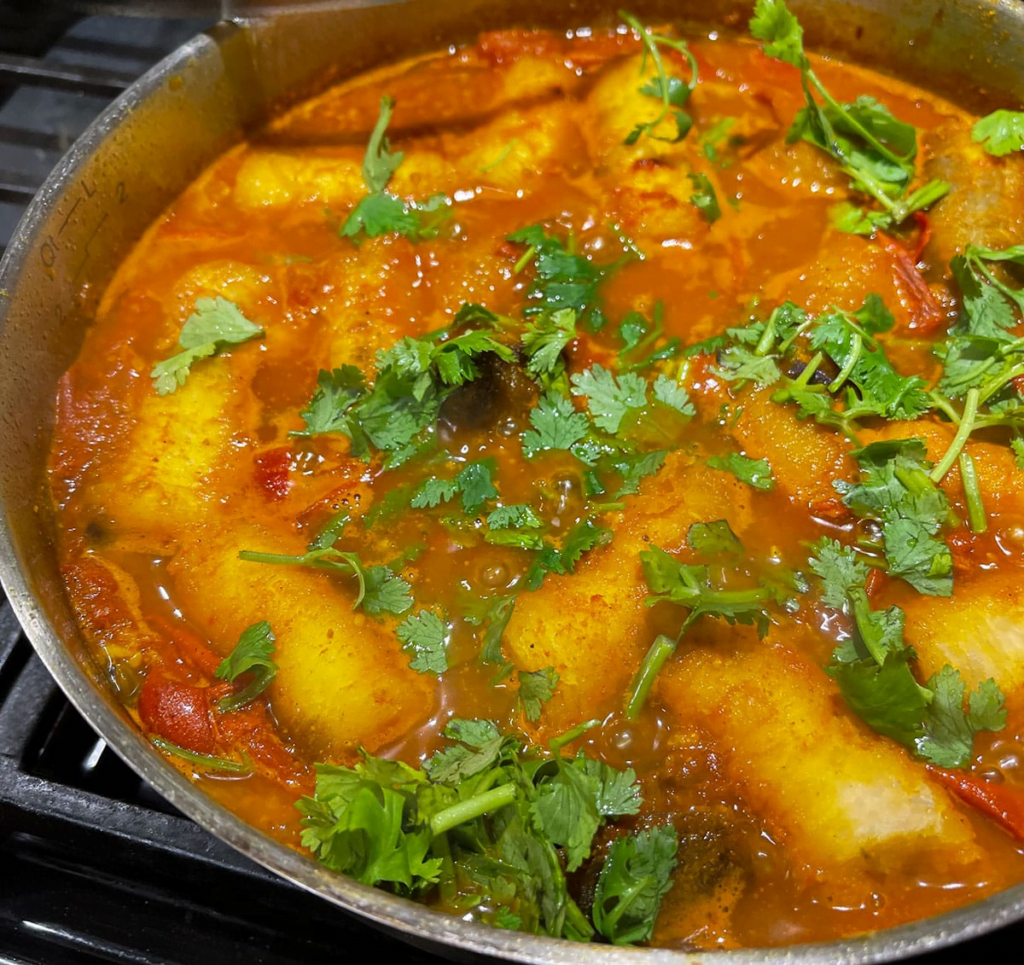
Matoke, also known as Ibitoke in Kinyarwanda, is a beloved dish in Rwandan cuisine made primarily from green bananas. The history of Matoke in Rwanda is intertwined with the broader culinary traditions of the East African region.
The cultivation of bananas in East Africa dates back thousands of years, making it one of the oldest crops in the region. While Matoke is often associated with Uganda, where it is considered a national dish, its popularity and significance extend to neighboring countries, including Rwanda.
In Rwanda, the green bananas used for Matoke are locally grown, benefiting from the country’s fertile volcanic soil and temperate climate. Traditionally, Matoke is cooked by steaming or boiling the bananas until they become soft, after which they are mashed and often served with a sauce or stew.
Over time, Rwandan variations of Matoke have emerged, incorporating local ingredients and flavors. The dish represents more than just a culinary delight; it is a testament to the shared cultural and agricultural heritage of the East African region and the adaptability of Rwandan cuisine to incorporate and celebrate regional flavors.
Rwandan food – Ingredients for Matoke
- Green bananas
- Onions
- Tomatoes
- Bell peppers
- Spices and herbs
How to prepare Matoke
- Peel and slice the green bananas.
- In a pot, sauté onions, tomatoes, and bell peppers.
- Add the sliced bananas and some water.
- Cover and let it simmer until the bananas are soft and have absorbed the flavors of the spices and herbs.
Presentation and Serving
Serve Matoke hot, garnished with fresh herbs. It can be enjoyed as a main dish or a side dish.
Drink Pairing
A fruity wine or a light beer pair well with the sweet and savory flavors of Matoke.
Rwandan food – Ibihaza
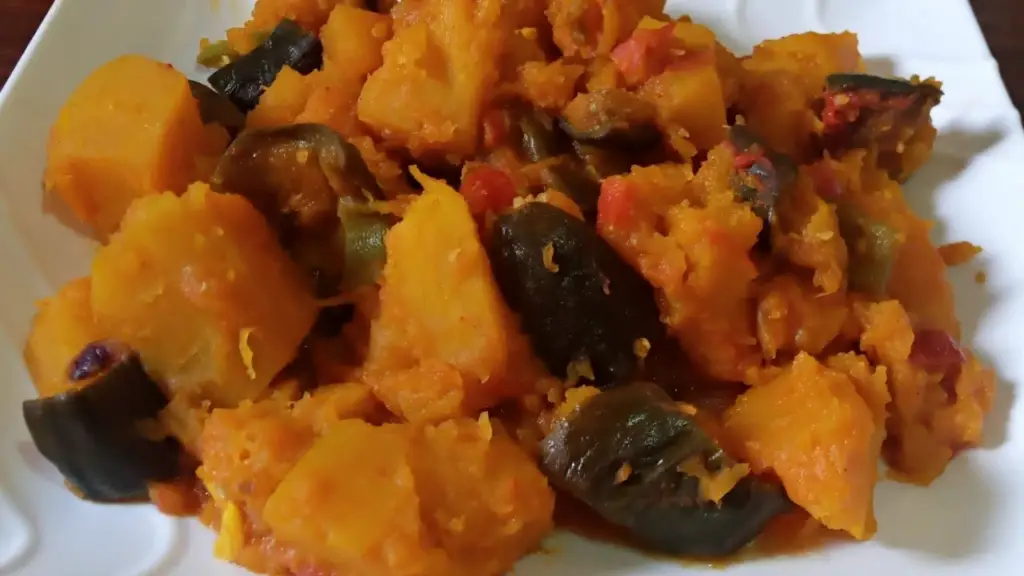
Ibihaza In English
Here is an off the cuff fact that you may find interesting.
Such is the richness and diversity of Africa that the same word may have completely different meanings across the continent. In this article we are discussing the delicious meal of Ibihaza.
In the Igbo language spoken in Nigeria, Ibihaza in English refers to “work” or “job”. The term is commonly used to describe any form of employment or occupation.
Background and History
Ibihaza, a traditional Rwandan food dish made from pumpkins and beans, is a reflection of the country’s agricultural richness and culinary creativity. Pumpkins, with their ability to thrive in diverse climates, have been cultivated in Rwanda for generations.
Their versatility as a food source, both in terms of the fruit and the seeds, made them a staple in many Rwandan households. The combination of pumpkins with beans in the Ibihaza dish showcases the Rwandan tradition of blending different food sources to create balanced, nutritious meals.
Beans, being a primary source of protein, complement the vitamins and minerals found in pumpkins. Historically, Ibihaza was especially valued during times when meat was scarce, as it provided essential nutrients to the diet.
Over the years, variations of Ibihaza have emerged, with different regions adding their unique twists, such as incorporating groundnuts or other local ingredients. Today, Ibihaza stands as a symbol of Rwandan culinary heritage, representing the blend of tradition, nutrition, and the bounties of the land.
Rwandan food – Ingredients for Ibihaza
- Pumpkins
- Beans
- Salt and spices
Rwandan food – How to prepare Ibihaza
- Cut the pumpkins into pieces.
- Boil them with beans until both are soft.
- Season with salt and spices and serve.
Presentation and Serving
Ibihaza can be served as a main dish or a side dish.
The soft texture of the pumpkins complements the hearty beans.
Drink Pairing
A glass of fresh fruit juice or a light beer complements the earthy flavors of Ibihaza.
Rwandan desserts – Ikinyiga
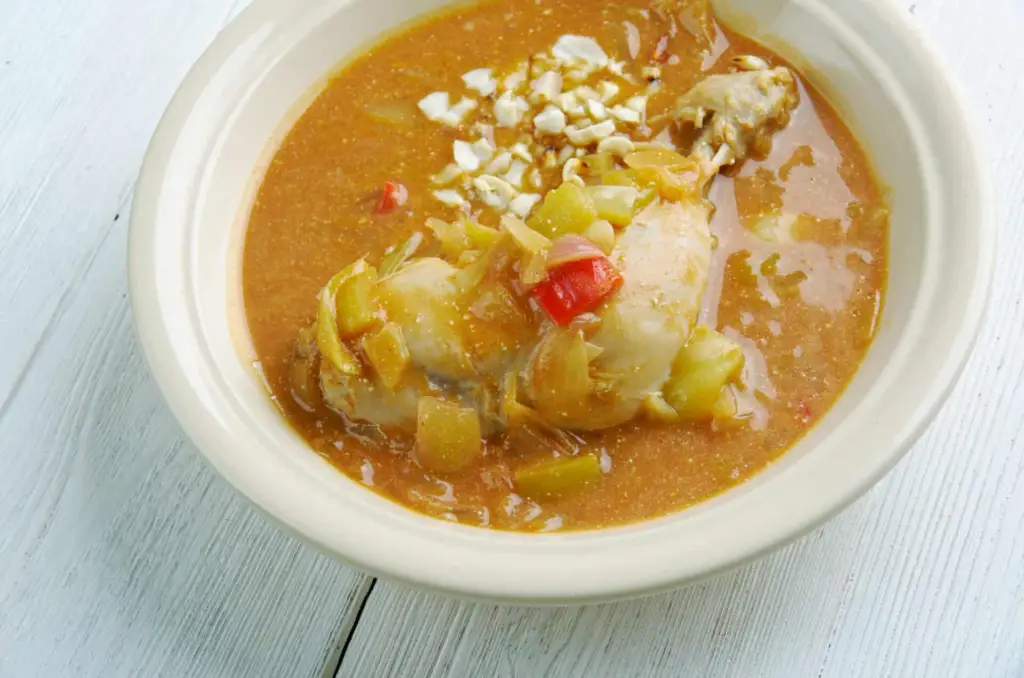
Ikinyiga, while not as widely recognized as some other Rwandan dishes, holds a special niche within the country’s culinary tapestry. Rooted in the use of groundnuts, Ikinyiga is a testament to the versatility and importance of this legume in Rwandan cuisine.
Groundnuts, introduced to Africa from the New World, quickly became a staple across the continent due to their adaptability to diverse climates and soils. In Rwanda, groundnuts were not only consumed as a snack but also transformed into pastes, sauces, and in the case of Ikinyiga, a rich pudding.
The dish showcases the Rwandan tradition of creating hearty, flavorful meals from simple ingredients. Over time, as culinary techniques evolved and intercultural exchanges took place, Ikinyiga might have incorporated influences from neighboring regions, but its core essence remained rooted in Rwandan traditions.
Today, Ikinyiga stands as a delightful representation of Rwanda’s ability to transform humble ingredients into dishes that resonate with history, culture, and a sense of place.
Rwandan food – Ingredients for Ikinyiga
- Groundnut paste
- Sugar
- Water
How to prepare Ikinyiga
- Mix groundnut paste with sugar and water.
- When it has formeda smooth paste it is ready to cook.
- Cook over low heat until the mixture thickens.
- Let it cool and serve.
Presentation and Serving
Ikinyiga can be served cold or at room temperature. It’s a rich and creamy dessert that satisfies the sweet tooth.
Drink Pairing
A cup of Rwandan tea or coffee is the perfect accompaniment to Ikinyiga.
Rwandan desserts – Umutsima w’uburo

Umutsima w’uburo, a traditional Rwandan pudding made from millet flour, is a nod to the ancient agricultural practices and culinary traditions of the region. Millet, one of the oldest cultivated grains in the world, has been grown in Africa for thousands of years.
In Rwanda, millet held a significant place not just as a food source but also in cultural and religious ceremonies. The creation of Umutsima w’uburo is a testament to the Rwandan culinary ethos of maximizing the potential of locally available ingredients.
The dish, with its smooth texture and subtle flavors, showcases the versatility of millet, transforming it from a basic grain into a delightful dessert. Historically, Umutsima w’uburo would have been enjoyed during special occasions or festivities, given the labor-intensive process of preparing millet flour.
Over time, as culinary techniques evolved, the dish became more accessible, making its way into everyday Rwandan meals. Today, Umutsima w’uburo stands as a symbol of Rwanda’s rich culinary heritage, bridging the past with the present and offering a taste of the country’s deep-rooted traditions.
Ingredients for Umutsima w’uburo
- Millet flour
- Water
- Sugar
Rwandan food – How to prepare Umutsima w’uburo
- Mix millet flour with water and sugar to form a smooth paste. C
- Cook over low heat until the mixture thickens.
- Let it cool and serve.
Presentation and Serving
Serve Umutsima w’uburo cold or at room temperature. It’s a light and refreshing dessert.
Drink Pairing
A glass of fruit juice or a light beer complements the subtle flavors of Umutsima w’uburo.
Conclusion
Rwandan cuisine is a reflection of the country’s rich cultural heritage and agricultural abundance. From hearty main courses to sweet puddings, there’s something for everyone to enjoy. Whether you’re a seasoned chef or a culinary novice, these recipes offer a taste of the heart of Africa.
FAQ’s
What are the characteristics of Rwandan Food Recipes
Rwandan food recipes offer a delightful blend of flavors and traditional African cuisine. From the popular dish called “Ugali” made with maize meal to the savory “Isombe” made with cassava leaves,
Rwandan cuisine is rich in taste and cultural significance. Explore the diverse array of Rwandan food recipes and savor the unique flavors that this East African country has to offer.
What are the main staples of Rwandan cuisine?
Bananas, plantains, pulses, sweet potatoes, beans, and cassava.
Is meat commonly consumed in Rwanda?
Yes, many Rwandans eat a lot of meat nowadays.
What is the significance of beverages in Rwandan culture?
Beverages, both alcoholic and non-alcoholic, play a significant role in Rwandan culture and feature in traditional rituals and ceremonies.
What are some popular Rwandan beers?
Primus, Mützig, and Amstel are some of the commercial beers consumed in Rwanda.
Is Rwandan food spicy?
Rwandan cuisine is flavorful but not overly spicy. It focuses on fresh ingredients and simple preparation methods.
What is Isombe Rwanda?
Isombe Rwanda is a traditional Rwandan dish made from mashed cassava leaves and served with various accompaniments such as boiled plantains, beans, and meat.
It is a staple food in Rwanda and is known for its rich flavors and nutritional value. Isombe is often enjoyed with a side of ugali, a popular cornmeal dish in East Africa.
What is the most popular dessert in Rwanda?
While there are many desserts in Rwandan cuisine, Ikinyiga and Umutsima w’uburo are among the favorites.

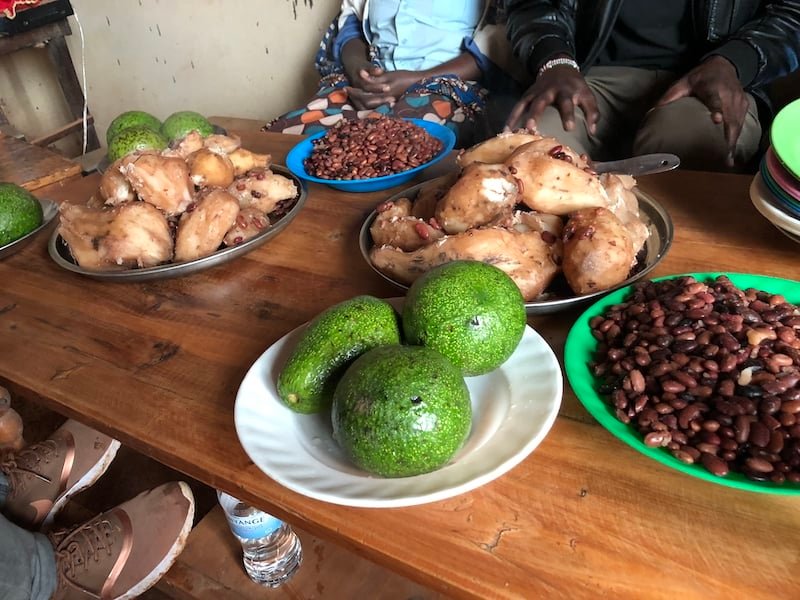
You forgot to say how friendly the people are!
Hey Brandon thanks for the encouragement
I have been to Ruanda and everything you say about the cuisine and the country are true – well done